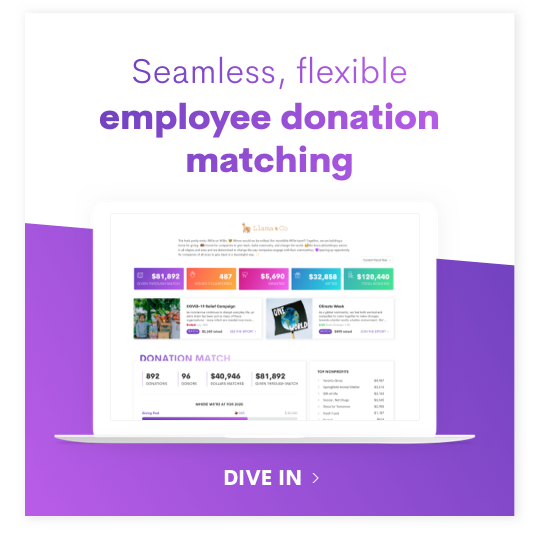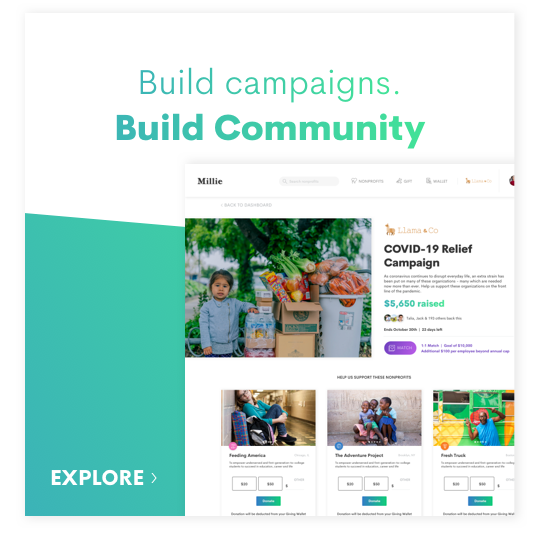In the early days of Millie, I met with several philanthropists in the Boston area to talk about charitable giving. The data had shown that young people were giving reactively through peer-to-peer campaigns and weren’t feeling good about it, and I figured philanthropists would have some golden nuggets to apply to the younger generation. I needed to learn more about the process — how people think about donating and what strategies they use. Sitting down with these incredibly generous individuals was a start.
Of the many conversations I had, the golden nugget across all became clear. And it was not something I was expecting.
These philanthropists filled me in on the secret: “Rachel, I only became thoughtful about giving when I set up a donor-advised fund.”
So the first thing that popped into my head was undoubtedly “What is a donor-advised fund?”
A donor-advised fund (DAF) is basically a giving account. It’s a financial vehicle for charitable giving where the donor puts money into an account to be disbursed over time. The fund is operated by a 501(c)3 who gives you a tax-deductible receipt up front. While in the account, the money matures until a donor gives recommendations about its distribution. There are obvious benefits to a DAF: the money is all in one place and it doesn’t incur taxes. In some DAFs, it even gains value over time, meaning the overall amount donated can be significantly more than what was initially put into the fund.
But no one talks about the other very important byproduct of a DAF — the fact that it makes you, the donor, much more thoughtful about the entire charitable giving process.
When you set up a DAF, you’re committing a certain sum of money upfront. Because you’ve already set the money aside, you’re more likely to think carefully about how exactly you want to allocate it. The DAF allows you to focus your attention on where you’re giving and who you’re supporting, and less on how much. This benefit is the one philanthropists were referring to, and it became a cornerstone of inspiration for Millie — which, at its core, aims to recenter how we think about giving.
Historically, donor-advised funds have been a tool only for the wealthy. Most DAFs cost $10,000 to start, with some venturing down to $5,000. At $481 per year, millennials don’t give nearly enough to come close to that (baby boomers average $1,200 per year and are also out of this range). 94% of Americans have a bank account. But less than a quarter of one percent (about 0.15%) have a donor-advised fund, with the average DAF being $237,000. Case in point: it’s not something available for everyone, but if you’re very wealthy, you most likely have one.
My goal then became to democratize a tool usually reserved for the extremely wealthy and bring it to the everyday person, so that each individual can be more thoughtful and proactive in their giving habits.
I scoured the country for the right donor-advised fund to partner with that shared our vision and landed on the incredible Infinity Benefit Foundation (IBF). As of the Millie beta launch last month, anyone can open up a donor-advised fund from our partner, the IBF, with as little as $20. On the Millie app, your wallet then becomes your own personal DAF. We believe that if you set aside a larger sum initially, this commitment then frees your mind to focus on the giving itself, and not on having enough to give.
We’re fully motivated for you to allocate 100% of what you upload to your wallet. For us, it’s about being intentional with your giving. Think of it as something like a gift card or preloaded money in a Starbucks app. You commit a certain amount upfront, and then have the liberty of choosing how to donate it.
This act of choosing emphasizes the freedom and excitement of carefully selecting an organization to support. It restores the focus on what matters: how and why you give. Get ready for a new generation of charitable giving.
Learn more about how it works: http://milliegiving.com/



